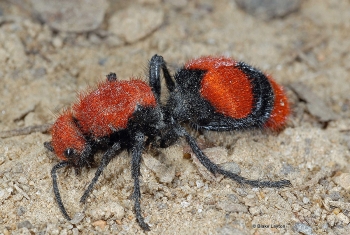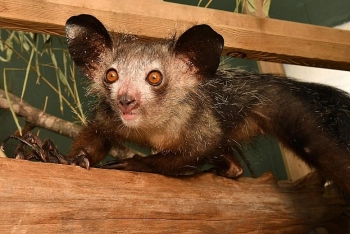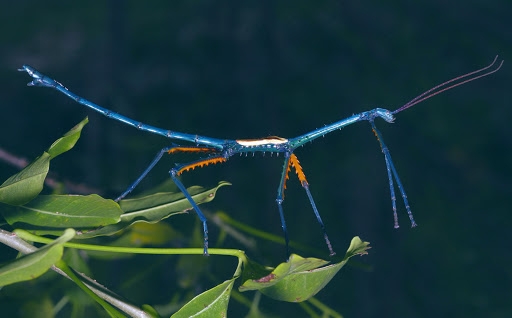Sloth - The Strangest Animal In The World
 |
| Sloth - The Strangest Animal In The World - Photo: National Geographic Kids |
Sloths—the adorable and lethargic animals living in treetops—depend on the health and survival of Central and South American tropical forests. They spend much of their lives in the canopy, snoozing and remaining hidden from predators.
The animals live solitary lives and travel from tree to tree using canopy vines. Located in places such as Brazil and Panama, the six species of this strange and wonderful animal need healthy forests to survive.
Sloth: Habitat
Though their ancestors lived in North America, modern sloths live in Central and South America, enjoying the tall trees found in rain, cloud and mangrove forests. Most sloths will occupy several trees during their lifetime, but some, including the three-toed species, may spend their entire lives in the tree they were born in, according to Bradley Trevor Greive's book, "Priceless: The Vanishing Beauty of A Fragile Planet" (Andrews McMeel Publishing, 2002).
For the most part, a sloth's life revolves around sleeping and eating in its tree homes. These mammals come down from the treetops only to poop (which they do once a week), search for a mate or to establish a new territory, according to Live Science.
Types of Sloth
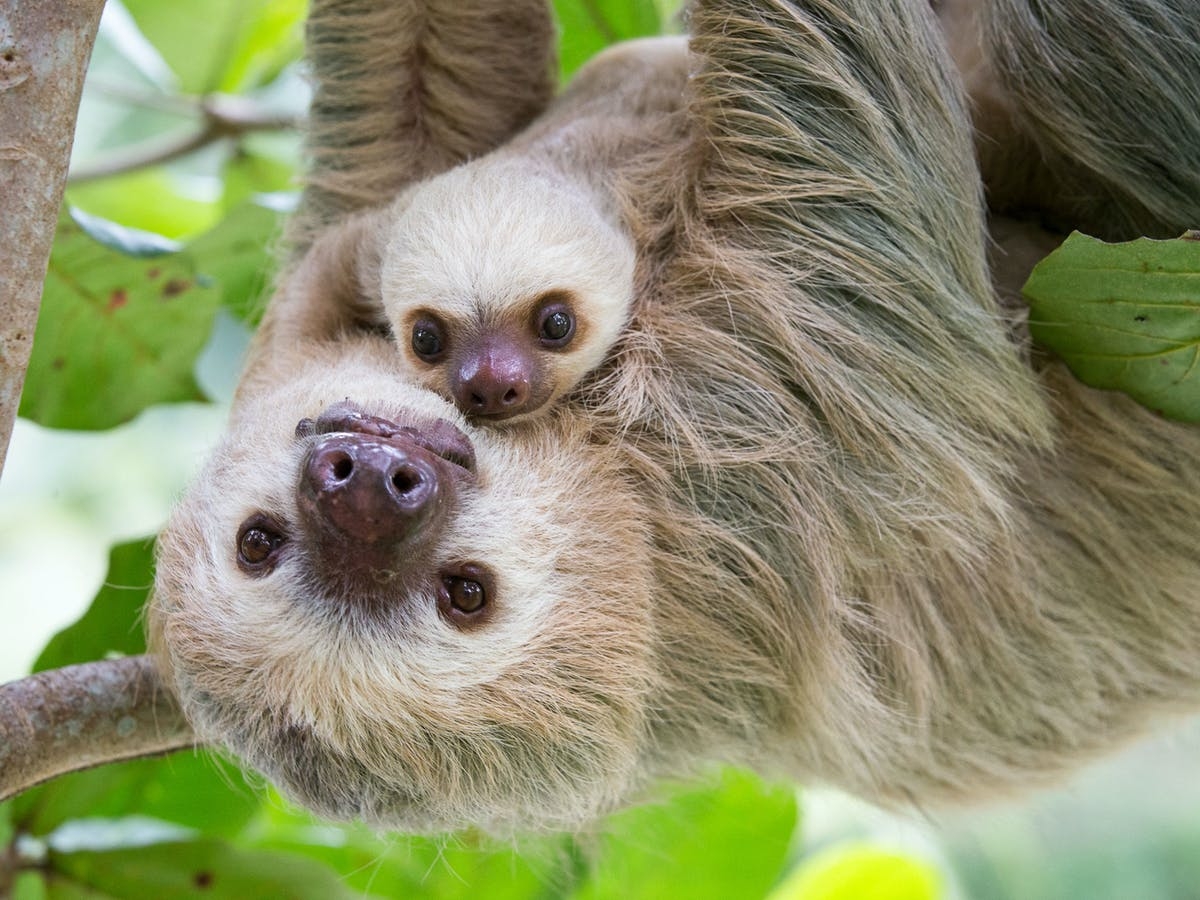 |
| Photo: The Consevation |
There are two different types of sloths, two-toed and three-toed, and six species, Worldwildlife.org cites:
-
Pygmy three-toed sloth (Bradypus pygmaeus)
-
Maned sloth (Bradypus torquatus)
-
Pale-throated sloth (Bradypus tridactylus)
-
Brown-throated sloth (Bradypus variegatus)
-
Linnaeus’s two-toed sloth (Choloepus didactylus)
-
Hoffman’s two-toed sloth (Choloepus hoffmanni)
What do Sloths eat?
Two-toed sloths are omnivorous, meaning they can consume plants and animals. Their diet includes fruits, leaves, insects and small lizards. Three-toed sloths, on the other hand, are almost entirely herbivorous (plant eaters). Their diet consists primarily of leaves and buds from select species of tree, including the leafy cecropia tree. The leaves that make up much of the sloth’s diet are difficult to digest. But like many herbivorous mammals, sloths have a multichambered stomach filled with symbiotic bacteria that can break down cellulose.
Sloths digest food even more slowly than they eat it. In fact, it can take up to a month for a sloth to digest a single meal, according to the Jacksonville Zoo in Florida. Their leafy diet isn't very nutritious, so they don't get much energy from it, which could be the reason for their sluggish lifestyle.
How often do Sloths sleep?
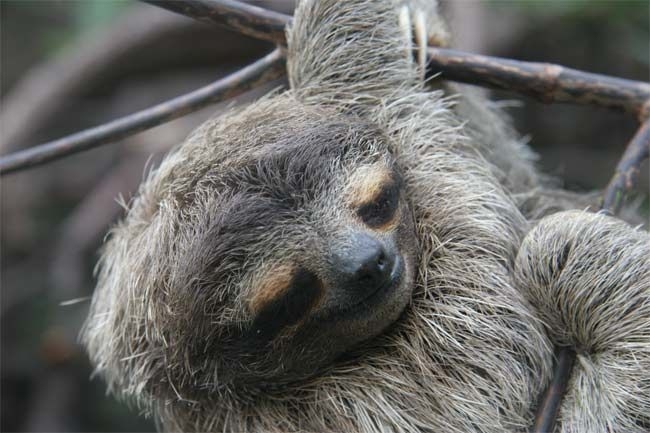 |
| Photo: Live Science |
Sloths snooze for about 15 hours per day. That leaves only nine hours to lumber through the trees. They maintain a low body temperature of about 86°F-93°F and move in and out of the shade to regulate their body temperature.
Sloth: Conservation status
Despite sloths being relatively defenseless creatures, their populations aren't struggling as a whole. Nonetheless, humans pose a threat to the continued survival of sloths through deforestation and poaching. Four of the six living sloth species are rated as least concern by the International Union for Conservation of Nature and Natural Resources (IUCN). However, the maned three-toed sloth (Bradypus torquatus), native to Brazil's rapidly shrinking Atlantic Forest, is classified as vulnerable to extinction and the pygmy three-toed sloth, found only on Panama's Escudo Island, is classified as critically endangered.
Fun Facts About Sloths
Sloths are considered the world's slowest animal. They creep at such a slow pace that algae grow on their fur. This green algae, known as Trichophilus, grows only on the fur of sloths. More than half of all sloths harbor these algae, which gives their coarse, brownish-gray coats a greenish hue during the rainy season.
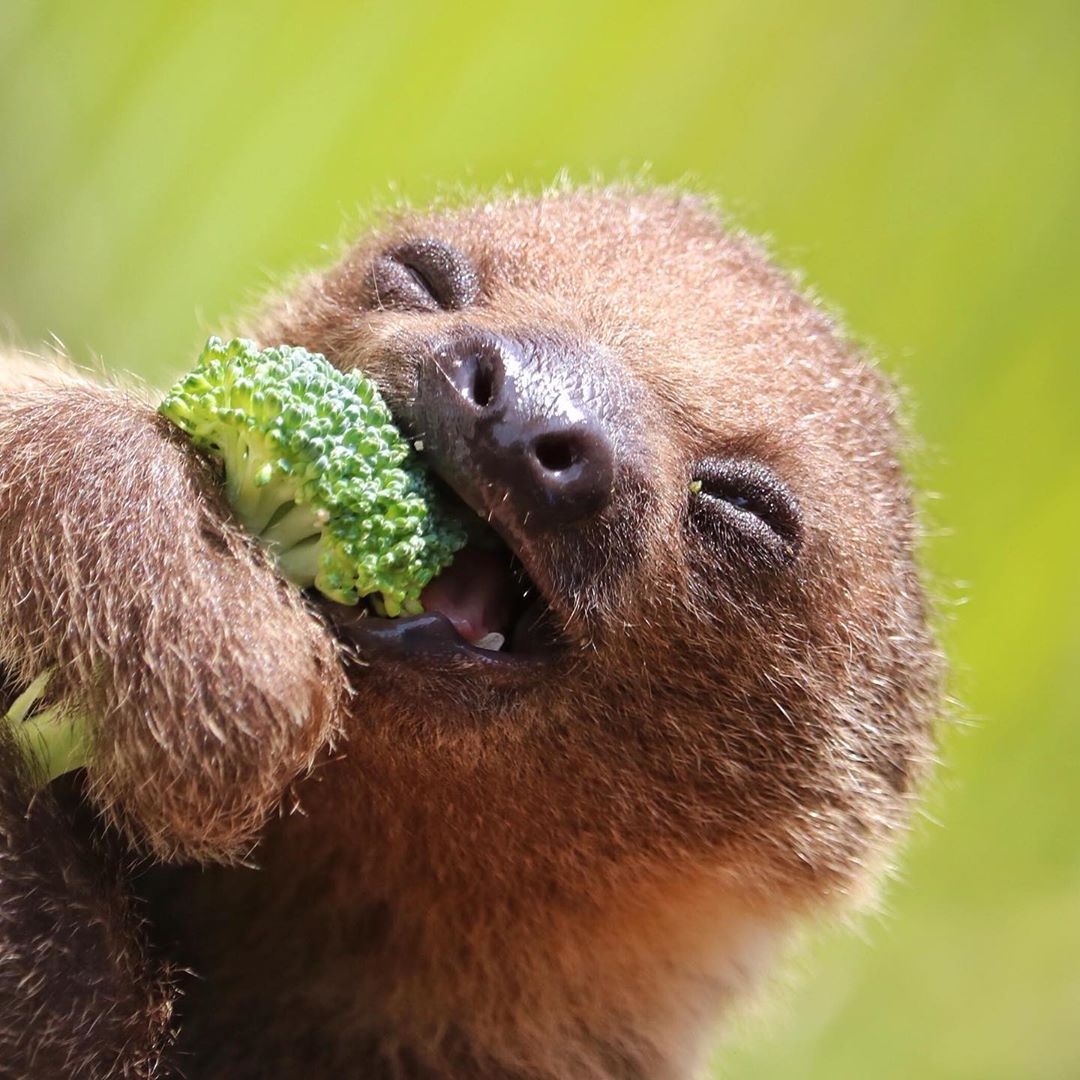 |
| Photo: Reddit |
The algae work to the sloth's advantage. Having green fur provides these arboreal animals with camouflage to blend in among the trees. Staying out of sight is the sloth's best defense against its predators, which include jaguars, harpy eagles and humans.
All mammals, from humans to giraffes, have seven vertebrae in their necks — except for sloths and manatees. Two-toed sloth species have between five and seven neck vertebrae, while three-toed sloths have eight or nine. Having a few extra neck vertebrae allows three-toed sloths to rotate their heads up to 270 degrees.
| Miss C, likely the world's oldest known sloth, died on June 2 at 43 years of age. The Hoffman's two-toed sloth lived for twice as long as the typical sloth of the same species and was humanely euthanized after age-related issues had deteriorated her quality of life. “The treatment Miss C required was very invasive and would likely only delay the inevitable so the hard decision was made to humanely euthanize her," said Ainsley. Born in 1974, Miss C was the last remaining sloth in Australia and was thought to be the oldest known sloth according to her keepers. The zoo attributes her long life to the regular care given by zoo staff. Two-toed sloths in the wild typically live for 20 years. News of Miss C's death was greeted with an outpouring of sadness on social media by those who had visited her in her 43 years at the zoo. |
|
Velvet ant is one of the strangest animals in the world and known for their extremely painful stings, hence the common name 'cow killer' or ... |
|
The aye-aye (Daubentonia madagascariensis) is a long-fingered lemur listed as the world's largest nocturnal primate. It is native to Madagascar with rodent-like teeth that perpetually ... |
|
Weirdest Things in America: There are some crazy things happening in the USA, the country in North America between Canada and Mexico. If you plan ... |

